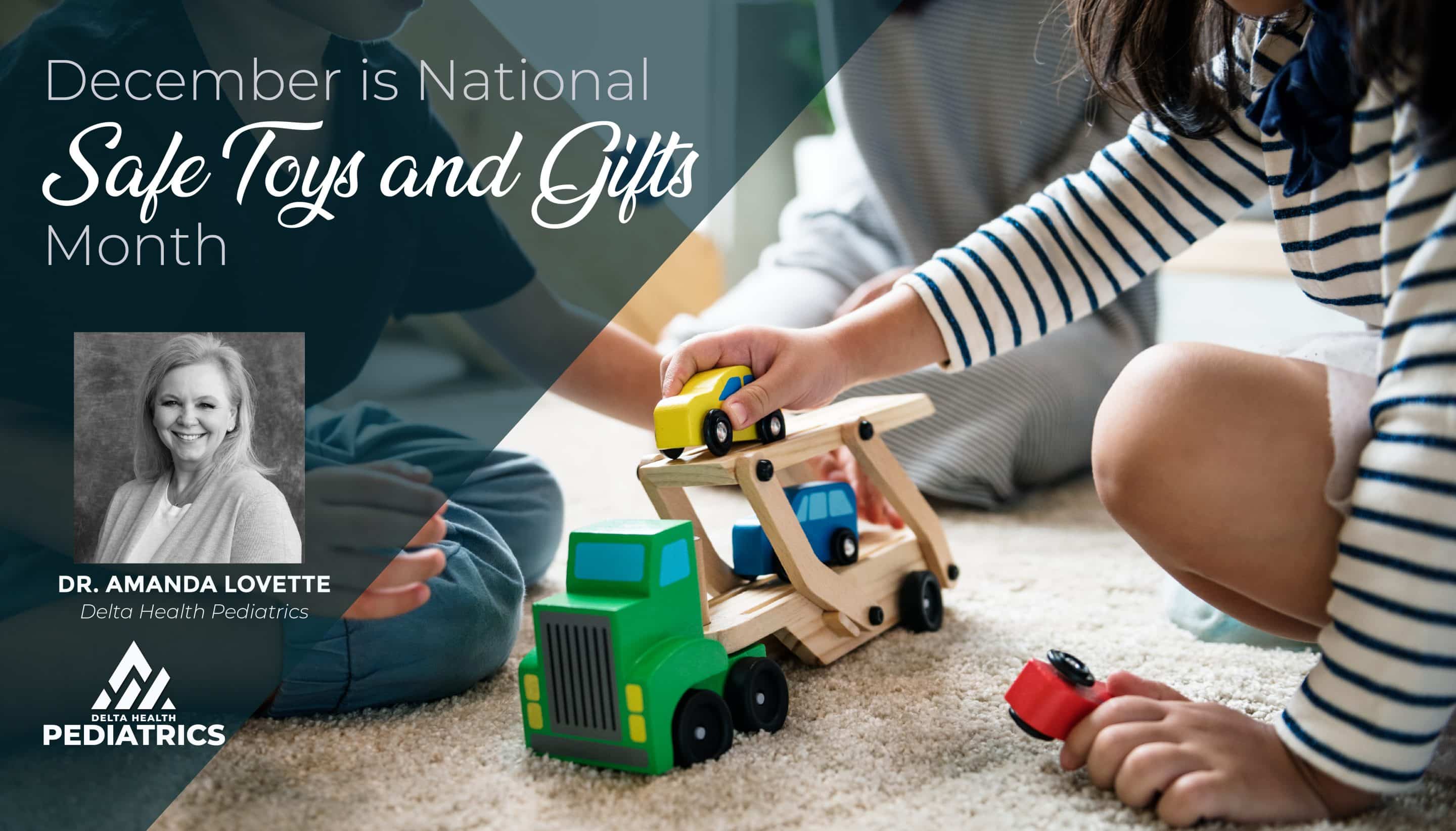December is National Safe Toys and Gifts Month by: Amanda Lovette, MD
Happy December! This is a month most people associate with Christmas, Hanukkah, Kwanzaa, and other special holidays. This is also the month that most people associate with gift-giving – lots of it! We all love getting and giving gifts, but sometimes those gifts can be dangerous for those too young to recognize potential dangers.
Over the years, the federal and various state governments have put into place laws to help toy manufacturing companies produce the safest toys for our children. The Consumer Product Safety Commission has developed toy manufacturing and product standards that have become some of the most stringent in the world and have prevented many thousands of serious injuries. In addition, the CPSC is continuously monitoring toys that are introduced into our market system, watching for consumer complaints and physical injuries caused by these products, and setting up a vigorous recall system in the event a toy is found unsafe and must be pulled from the market. The CPSC is also instrumental in keeping unsafe toys from being shipped to and distributed in our country by foreign companies. In short, because of the policies and procedures currently enforced, your child’s toys are safer today than they have ever been.
That being said, there are some situations in which toys can be unsafe for certain children, if not for others. Toys with small parts that older children may be able to play with safely will not be safe for a child younger than 3. They may put these small parts in their mouths and then are at risk of choking or aspirating the toy. Toys like Barbie shoes, or games with marbles, for example, should not be given to children under 3 because of the risk of aspiration. Pay attention to the suggested age range that is printed on the game you are buying – these age ranges are there for a reason and are meant to keep your younger child away from unsafe toys for his or her age range.
Strings and straps on toys for older children can also be a danger for younger children, as can balloons (which can present a suffocation danger), caps for toy guns, and even magnets. Magnets, especially, can be very dangerous if ingested, because if two or more magnets are ingested and then attract each other across the walls of the intestine, this can cause the intestine to develop a hole, which can be very serious for your child. Button batteries often found in toys for older and sometimes even younger children can also create serious health problems for your young child, causing chemical burns on the insides of their bodies if they get stuck and do not pass easily.
So how do we approach this gift-giving season as safely as we possibly can for our children? Here are some tips:
- Inspect the toys of all your children, older and younger, for loose battery compartments, and tighten the screws if they are loose. Do this routinely while the toy is in your house and being used. Don’t just think about toys, but also inspect other household items like TV remotes, game controls, light-up pens, and watches that may not have secured battery compartments.
- Keep balloons, especially if they are deflated or broken, away from children, and monitor their play with balloons since the latex from a popped or deflated balloon can quickly suffocate a child.
- Inspect all toys for magnets and if they are present, keep these toys far away from little hands and mouths.
- Keep all the toys for the older children away from the younger children. Do pay attention to the recommended age range for the toys and don’t let younger children play with older children’s toys, especially if you are not present to supervise and inspect the toys prior to their use.
- Bicycles and other wheeled riding toys are commonly given at this time of year. Buy a helmet for your child to use as well and make it a rule that any time the wheeled riding toy is used, a helmet must be worn. The earlier your children start this habit, the better they will continue to follow it.
- Never give young children any toy with strings, cords, or straps that could fit around the child’s neck. And pay attention to other household items that could create a similar level of concern, like the cords for window blinds. The CPSC recommends that parents cut off strings, cords, and straps of these types of toys or avoid giving them to children altogether.
- If you choose to give your child an electric toy, keep in mind the possible dangers, including electric shock, electric burn, and injury from moving parts. Use a GFCI-protected plug to power the toy – this may prevent electrocution.
These suggestions certainly don’t encompass the entirety of toy safety, but most toy injuries can be avoided by using the toys as intended, in the correct age range, and with appropriate supervision.
Happy Holidays everyone!



